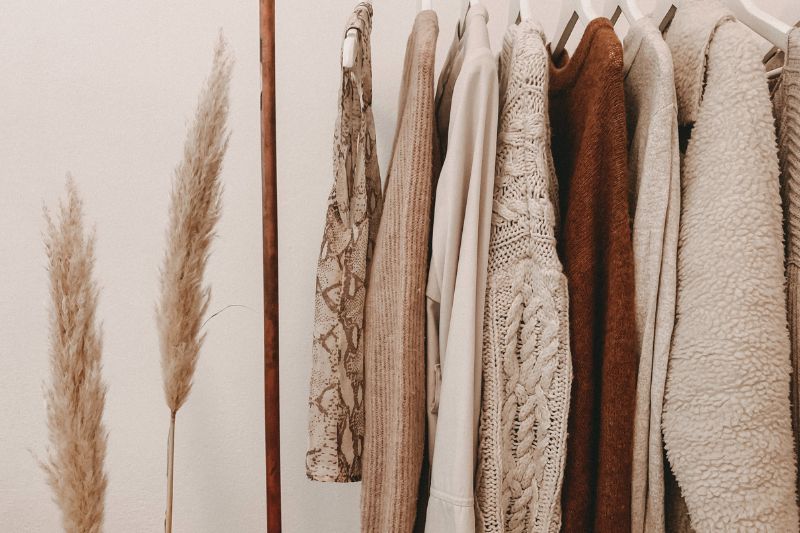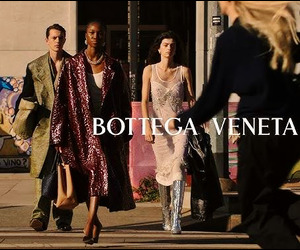No products in the cart.
8 Ways to Be More Sustainable with Your Fashion Choices

The exhilarating rush of finding a new piece to add to your wardrobe is a feeling every shopaholic is familiar with. That moment when you spot the perfect item—the must-have pair of boots, the trendy dress, the stylish sequined pants—it can all be so exciting. The giddy feeling you get when you continuously buy new pieces can be addictive to the point where you hoard more clothes than you can ever wear in your lifetime.
These days, the fashion industry is evolving with an increased focus on sustainability as many begin to acknowledge the need to balance consumer desires with environmental consciousness. Forward-thinking brands innovate with eco-friendly materials and ethical production processes that invite fashion enthusiasts to be part of a positive change. As a consumer, you have an equally vital role in this movement. You can practice sustainability in your fashion purchases and contribute to the well-being of the planet by following these tips:
Reduce Your Purchases
The most straightforward step towards a sustainable wardrobe is simply to buy less. Before making a purchase, ask yourself if it’s an essential addition to your closet or a fleeting desire. This pause to reflect can be the first line of defense against the cycle of overconsumption. Reducing the number of items you buy lessens the demand for production and minimizes your clutter. Remember, each article of clothing not purchased is one less piece that will eventually end up in a landfill.
Invest in Quality Pieces
When you do end up buying, at least opt for quality garments. Try to shop leggings, t-shirts, or denim jeans that are well-made and can withstand the test of time rather than owning numerous pairs that lose their shape or fade after a few washes. While quality pieces often come with a higher price tag, their longevity means you won’t have to shop as often. Look for quality indicators like strong seams, durable fabrics, and timeless designs. Investing in quality is not just about the aesthetic and feel; it’s also a commitment to reducing waste.
Buy from Thrift Shops
The simple act of thrifting can turn you into a sustainable consumer. Buying secondhand items from the thrift store keeps them out of landfills and extends their life cycle, thereby significantly reducing your carbon footprint. These pieces are often more affordable, allowing you to save money while helping the planet. With the rise of online marketplaces for pre-owned goods, finding quality secondhand fashion has never been easier.
Support Sustainable Brands
Supporting ethical fashion and labels is a powerful way to drive change in the fashion industry. These brands are committed to ethical practices, responsible sourcing, and minimizing environmental impact. They often use organic or recycled materials and engage in fair trade practices, ensuring that your fashion choices support the planet and the people who make your clothes. You’re voting for a cleaner industry with your wallet by directing your spending towards these environmentally conscious companies. You can research which brands align with these values and become a patron of a more sustainable future.
Care for Your Clothes
The way you maintain your garments can also contribute to their sustainability. Extend the lifespan of your clothing through proper care—washing less frequently, using eco-friendly detergents, and following the care instructions on their tags. Small acts like air-drying instead of using a dryer can save energy and prevent fabric wear and tear. When your clothes need repair, consider mending them instead of tossing them out. Taking good care of your clothes means replacing them less often, reducing overall consumption.
Recycle or Donate Old Clothes
When it’s time to part with a particular piece of garment, whether they’re no longer your style or fit, recycling or donating them is a sustainable choice. Consider donating to local charities or secondhand stores to give your clothes a “second life.” You can also look for textile recycling programs for garments too frayed to be donated. Recycling helps divert textiles from landfills and reduces the demand for new raw materials. The next time you declutter your closet, you can contribute to sustainable fashion by being more responsible in discarding your unwanted clothes.
Rent or Borrow Outfits
Consider renting or borrowing your outfit for special occasions or one-time events instead of buying new. Rental platforms for designer dresses, formal wear, and even casual clothes are becoming increasingly popular and accessible. This approach saves you money and reduces the demand for new garments. Borrowing from friends or family can also be an excellent way to curate a unique outfit without impacting the environment. By participating in the sharing economy, you’re helping to cut down on the resources used for manufacturing and transporting new clothes.
Upcycle Your Clothes
Finally, you can also embrace the art of DIY and upcycling. This creative approach turns old or unused garments into new pieces without the need for new resources. With a bit of practice, you can quickly transform a dated skirt into a chic tote bag or add new life to a plain jacket with custom embroidery. There are various workshops and online tutorials that can help you start your upcycling journey, making sustainability both a practical and enjoyable endeavor.22
Embrace Sustainable Fashion
If there is anything you can learn from this article, it’s that integrating the value of sustainability into your fashion decisions does not have to be a daunting task. From opting to shop in thrift stores to properly caring for your clothes, your actions contribute to a collective movement toward reducing the fashion industry’s environmental impact. By adopting these practices, you’re curating a more ethical wardrobe and paving the way for a more sustainable world.















Leave a Reply